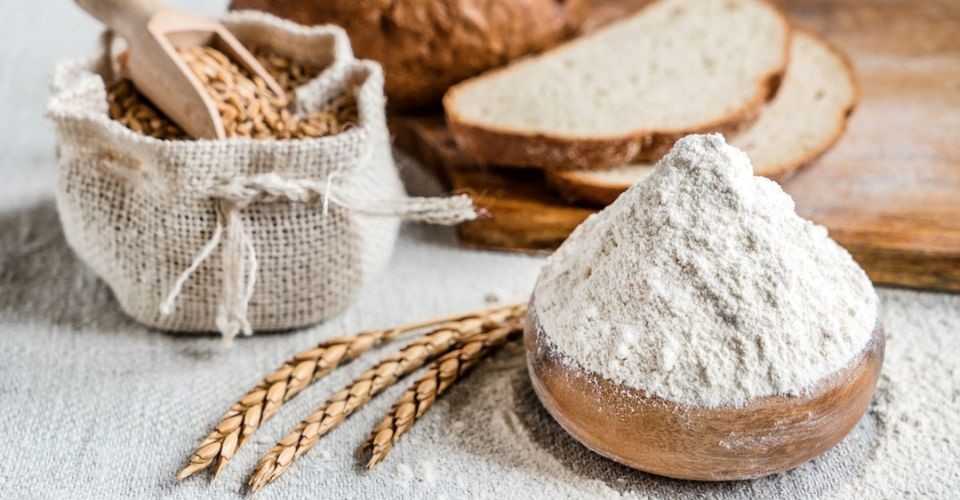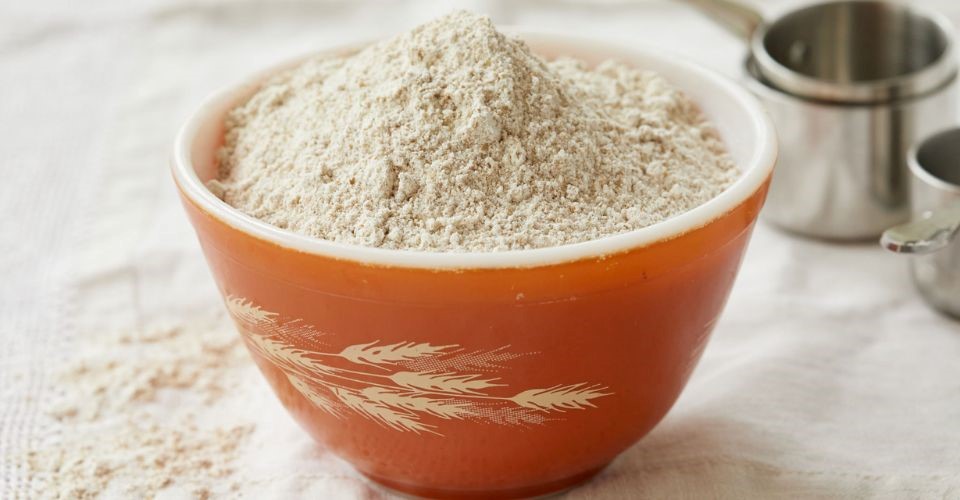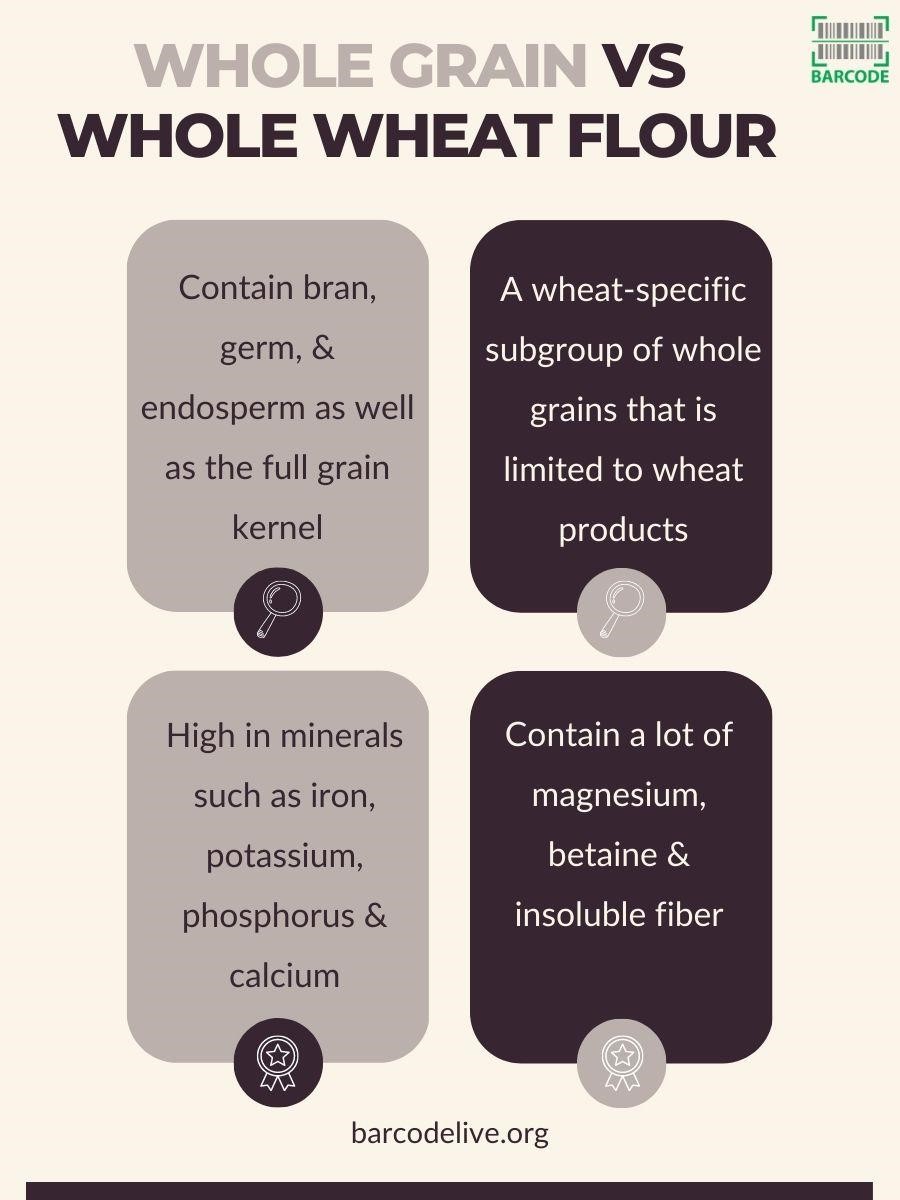Whole grain flour vs Whole wheat flour: How are they different?
What is the difference between whole grain flour vs whole wheat flour?
Knowing which goods to purchase can be challenging when trying to make healthy decisions for yourself and your family.
With so many items on the market, you may be wondering whether to buy whole grain or whole wheat products.
So, this post will discuss the difference between whole wheat vs whole grain flour.
Let’s check it out!

Wheat flour vs whole grain flour
What Is The Difference Between Whole Grain Flour Vs Whole Wheat Flour?
Is whole wheat and whole grain the same? It might be difficult for you to discern the distinction between whole grain and whole wheat goods.
But you will find the answer below!
Whole grain flour
Whole grain flours are made from unprocessed whole wheat kernels, grains, and seeds. Whole grains include whole wheat flour, buckwheat, barley, maize, oats, quinoa, and brown and wild rice.

Whole grain flour
There is a large amount of nutrition in whole grain flour.
Whole grains are high in minerals such as iron, potassium, phosphorus, and calcium. Most of the fiber content is lost when the bran is fully removed.
Whole grains and their flours are also a good source of complex carbohydrates and can form the foundation of a healthy, diverse diet.
Whole wheat flour
Whole wheat flour is the powder produced by milling wheat other than durum. Bran, endosperm, and germ are present in their normal kernel proportions. The usual ingredient is firm red wheat.
As the bran and germ contain oil, it has a shorter shelf life than white flour. Despite that, it yields goods that are denser and richer.
If you want to try a whole wheat product, you may go for Aashirvaad Whole Wheat Atta 11lb.

Whole wheat flour
The use of whole wheat reduces the incidence of type 2 diabetes. It contains a lot of magnesium, a cofactor for enzymes involved in the metabolism of glucose and the release of insulin.
Whole wheat flour contains betaine, which reduces chronic inflammation. It has a lot of insoluble fiber, which helps shield women from breast cancer and gallstones.
It has been demonstrated that consuming whole grain foods and dietary fiber lowers the risk of high blood pressure and heart attacks.
Below is a brief comparison table between whole grain flour and whole wheat flour:

Whole wheat flour vs whole grain flour comparison
Is Whole Grain Vs Whole Wheat Flour Healthier?
Whole grain and whole wheat are both believed to be good for our health. You may eat whole wheat or whole grain for weight loss, for example.
However, whole grains appear to be more healthy than whole wheat products because they provide a greater range of nutrients from various grains.
"Whole grain foods tend to give more diversity in your diet, which is always beneficial," says Cesar Sauza, a certified dietitian at AltaMed Health Services in Los Angeles.
Bulgur, for example, has far more fiber than most other cereals. One cup of cooked bulgur has around 150 calories and 8 grams of fiber, which accounts for approximately 32% of your daily fiber requirement.
Just roughly 4 grams of fiber (16% DV) are provided by the caloric equivalent of 100% whole wheat bread (about 2 slices).

Is whole wheat or whole grain healthier?
And are you wondering if 100 whole wheat bread vs whole grain bread in gam, which is better?
Actually, whole wheat bread has the same health advantages as whole grains.
Whole grain and whole wheat bread both include the complete grain kernel, giving them comparable nutritional benefits and lowering the risk of diabetes, cancer, heart disease, and several other diseases.
Unlike whole wheat flour, which is created by crushing whole wheat kernels into a powder, white flour eliminates the most nutrient-rich components - the bran and germ.
As a result, whole wheat flour is usually regarded as healthier. It contains protein, fiber, and a range of vitamins and minerals.
Whole grain meals are high in minerals, dietary fiber, antioxidants, and phytochemicals, and have the ability to serve as anti-inflammatory agents, lowering the risk of chronic illness.
To prevent a dense outcome, use 50 percent whole wheat and 50 percent another flour, particularly all-purpose, pastry flour, or spelt, when replacing it for all-purpose.
If you just want to use whole wheat, you'll need to add additional water.
Final Thoughts
Whole grains and whole wheat seem similar, and when it comes to your health, they are.
Knowing what to look for while buying is important.
So, it's critical to understand the distinctions between whole grain flour vs whole wheat flour in order to pick the best option for your meal!

![Iodized Salt vs Sea Salt Comparison [Nutrition, Taste, Cost & More]](https://barcodelive.org/filemanager/data-images/imgs/20230328/Tip_Iodized%20Salt%20Vs%20Sea%20Salt_1.jpg)
![Whole Wheat vs Whole Grain Diabetes: What Is Better? [Solved]](https://barcodelive.org/filemanager/data-images/imgs/20230217/News_Whole%20Wheat%20vs%20Whole%20Grain%20Diabetes_1.jpg)
4 Comments
Laura
Your articles are great as always, but there are a lot of information. Please make a short article how to better read, realize and apply them. Tons of helpful things.
Leave a Comment
Your email address will not be published. Required fields are marked *Barcodelive
You don’t need to read the whole thing in one sitting. Step… by step
Leave a Comment
Your email address will not be published. Required fields are marked *Sona Mistry
Is whole grain flour less healthy than unprocessed whole grains?
Leave a Comment
Your email address will not be published. Required fields are marked *Barcodelive
Yes. When food gets processed, the bran and the germ gets removed.
The bran contains 60% of all the minerals in a grain, such as phosphorus, potassium, manganese, copper and iron. The bran is also a great source of insoluble fiber. The germ is a concentrated source of tocopherols (Vitamin E family), folate, thiamin, phosphorus, zinc and magnesium. It also contains essential fatty acids, fatty alcohols and fiber. Food gets oxidized during processing which makes it to lose some vitamins(C,E)
One cup of whole wheat flour contains 15g of fiber and 16g of protein, while one cup of industrial white flour can have as little as 1g of fiber and 2g of protein
Leave a Comment
Your email address will not be published. Required fields are marked *Leave a Comment
Your email address will not be published. Required fields are marked *